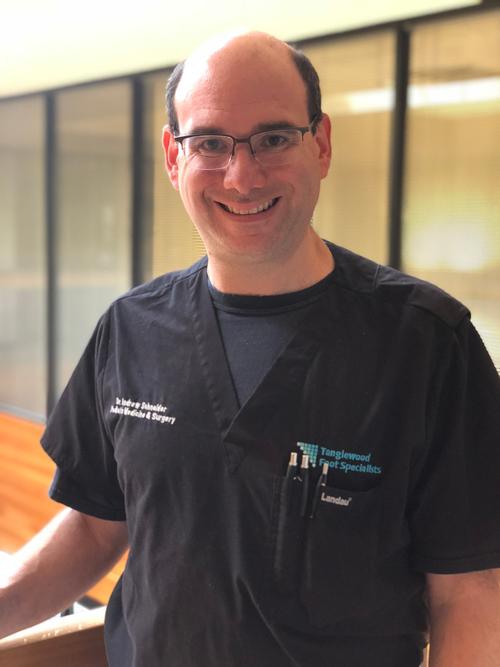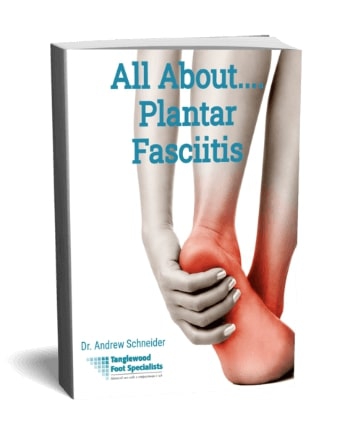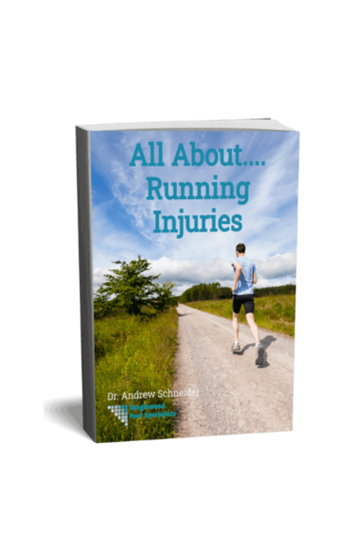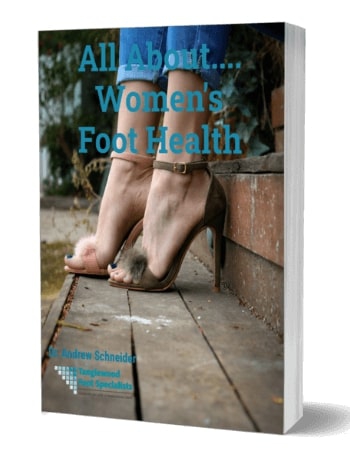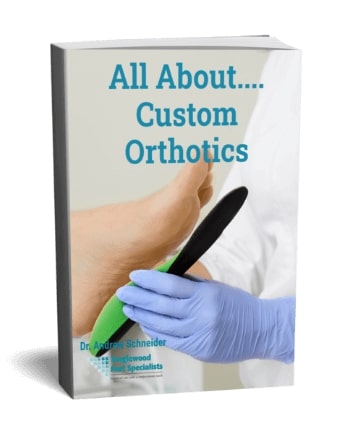 You wake up from a good night sleep. You have a good stretch and put your feet on the floor. You stand up and…
You wake up from a good night sleep. You have a good stretch and put your feet on the floor. You stand up and…
OUCH!
What is that? You have a sharp pain in your heel. It wasn't there yesterday…what could have happened overnight?
Heel pain is one of the most common conditions that I see in my Houston podiatry office. It affects young people and elderly people. It affects athletes and people who are more sedentary. It is not a sign of getting older. It is an injury. And it is something that can be successfully treated. Especially if you don't wait to come in. Give us a call for an immediate appointment.
What Causes Heel Pain?
Plantar Fasciitis
Plantar fasciitis is the most common cause of heel pain. The plantar fascia is a band of tissue that attaches to the bottom of the heel. It continues to extend through the bottom of the foot. When you walk or run, the tension on the plantar fascia ligament pulls on your heel and causes it to become inflamed. That's what is causing the pain you're feeling.
Plantar fasciitis causes a sharp, stabbing pain on the bottom of your heel. The pain is usually worse when you've rested for a while. That's why you feel the pain so severely when you first wake up in the morning. If you sit for a while during the day, it can feel bad again when you stand up. If you don't get it treated, it can end up hurting all the time. Plantar fasciitis can also cause arch pain along the course of the ligament. With every step you take. Don't let it get that bad!
Achilles Tendonitis
Achilles tendonitis causes pain in the back of your heel. The Achilles tendon is one of the strongest tendons in your body. It extends down the back of your leg and inserts into the back of your heel. The pain may also be farther up in your calf. Because of the pull of the tendon with every step you take, it can become inflamed. That inflammation is the source of your pain.
Achilles Tendonitis can be very frustrating to treat. It can take much longer than you expect to completely treat it. This is because the Achilles tendon has a poor blood supply to sections of the tendon. This makes it easier to become inflamed. It also limits some of the treatments that are available. That is why we need to treat Achilles tendonitis as soon as possible to give you pain relief.
Heel Bursitis
A bursa is a fluid-filled sac that your body forms in an area of irritation. The bursa is supposed to naturally cushion the irritated areas. Instead, it often becomes inflamed and causes a bursitis. The bursitis can cause pain on the bottom or the back of the heel. It's sometimes combined with plantar fasciitis or Achilles tendonitis. Sometimes it stands alone.
Heel Spurs

A heel spur is a calcification on the heel bone. The heel spur can be on the bottom of the heel, where the plantar fascia attaches. There can also be a heel spur on the back of the heel, where the Achilles tendon attaches. And, if you're really lucky, you can have heel spurs in both places at the same time.
A heel spur forms because of the pull of the soft tissue attached to it. When the ligament or tendon pulls on the bone, it causes the calcification to grow and form the heel spur. Here's the thing, just because you have a heel spur, it doesn't mean that it is the source of your pain. It also doesn't mean that the spur has to be removed with surgery. That's the #1 reason people are afraid to come into the office. Don't let fear of surgery stop you, it's always a last resort and usually is not necessary.
Stress Fracture
A stress fracture is a hairline fracture in the heel bone. The heel bone takes a lot of pressure. Every step you take impacts the heel. The heel bone has to absorb that shock. Sometimes the shock causes a stress fracture to form. This is very painful and important to be treated as soon as possible.
If a stress fracture is not treated it can further weaken and cause a more serious break in the heel bone. If this happens, it will always need surgery to repair with a long recovery. For this reason, I always take an x-ray whenever you come in with heel pain. It's usually not a stress fracture, but it is so important to rule it out.
Haglund’s Deformity
A Haglund's deformity, also known as a “pump bump” is a bump on the back of your heel. It forms because of an enlargement of the back of the heel bone. It is formed because of the rubbing of the back of the heel against the back of the shoe. While I often see a Haglund's deformity in women (thus the term “pump bump”), men can have it too.
Pain from a Haglund's deformity can vary. You may only have pain in certain shoes. Your pain might be so severe that you can't wear a shoe with a back to it. You also may have no pain at all. There are ways to treat a Haglund's deformity that addresses any of these possibilities. The best idea is for you to come into the office. We'll take an x-ray and discuss the options together.
Diagnosing Your Heel Pain

There are a lot of causes of heel pain. Because of this, it's important to make a proper diagnosis to determine the cause of yours. I'll start off by taking an x-ray in the office. We use a state-of-the-art digital x-ray system. This allows me to see the bones and joints in wonderful detail. I'll be able to see if your heel pain is caused by a stress fracture or if you have a heel spur or bone spur.
I also may use diagnostic ultrasound to examine the soft tissue. I'm able to see if there is inflammation in the tendons or ligaments. It's a useful tool in the office to be able to determine what structure is problematic and causing the pain.
There are also times where I have to send you out for more testing. I may send you for an MRI or bone scan if the x-ray or ultrasound is inconclusive. These tests show the bones, joints, and soft tissue in greater detail.
Heel Pain Treatment
Non-Surgical Treatment for Heel Pain
RICE
This stands for Rest, Ice, Compression, and Elevation. It is always a good principle to apply when treating an injury or inflammatory condition. Of these, applying ice packs to your heel is the most important.
Oral Anti-inflammatory Medication
These medications are prescribed to reduce your inflammation and resolve pain
Corticosteroid Injections
Corticosteroids are another form of an anti-inflammatory medication. This treatment allows the medication to be placed exactly at the inflamed tissue. I often use ultrasound guidance to make sure the steroid injection is in the exact right place.
Stretching Splint
This is a night splint worn on the foot and ankle to keep the foot properly positioned while you sleep. By keeping the soft tissue stretched, it allows your body to heal the inflammation. The splint maintains the foot in a good position. It will also help prevent the searing pain you feel first thing in the morning.
Custom Orthotics
Custom orthotics are specialized custom shoe insert. I design them specifically for you. The goal is to provide stability and efficiency to your feet. A properly made orthotic device will stop the tendons and ligaments from being overused. They will, in turn, reduce the inflammation.
Regenerative Medicine
Regenerative medicine includes platelet-rich plasma (PRP) injections. The PRP is derived from a sample of your own blood. The cells are spun in a centrifuge and the fluid with the highest concentration of growth factors and protein is extracted. I inject these cells into the inflamed area of the heel. This therapy helps reduce the inflammation while kickstarting the healing process for the tissue.
Extracorporeal Shockwave Therapy
This therapy is pretty much what it sounds like. Thousands of shockwaves are sent into the area of your heel pain. This breaks up the inflammation and attracts healing factors to the area. It is a procedure that is done in the office with great success.
Surgical Treatment for Heel Pain
Surgery is always a last resort. The chances of you having to have surgery to solve your heel pain is less than 5%. There are many different surgical procedures, some minimal incision and others more extensive. If it gets to the point where you need surgery, I'll discuss the surgical options with you. Most commonly it involves a plantar fascia release to eliminate the pull of the ligament on the heel. Together we will come up with the best plan. For now, let's take surgery out of the equation for now. Most likely it won't be necessary.
The Next Step Is Yours…Come In To Get Your Heel Pain Treated in Houston, TX
I know it seems like your heel pain will not improve, but that is not the case. I will work with you to determine the cause of your heel pain and come up with the best treatment plan. The best plan is always to treat your foot pain as quickly as possible. Call us at 713-785-7881 or request an appointment online . I look forward to meeting you soon.

